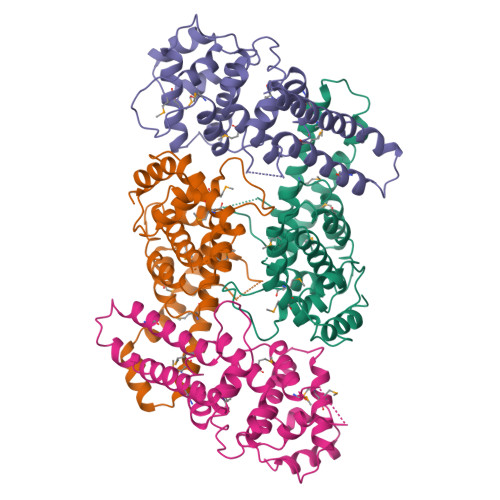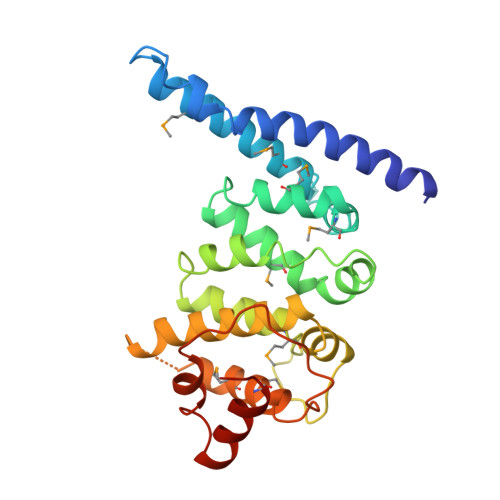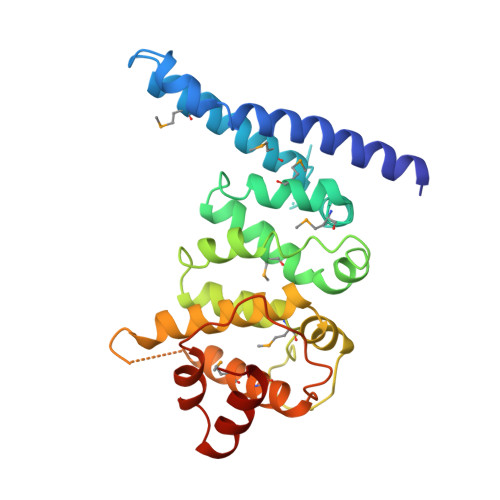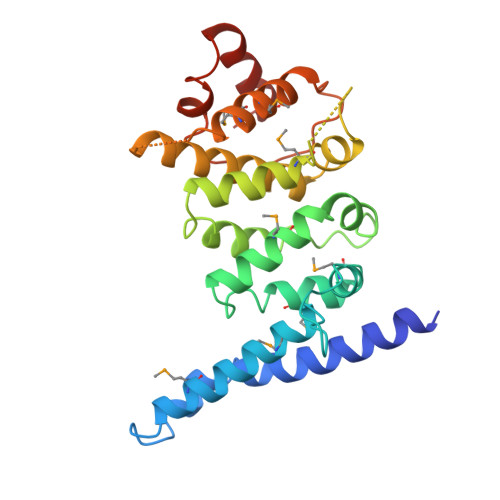The C-Terminal Alpha-Alpha Superhelix of Pat is Required for Mrna Decapping in Metazoa.
Braun, J.E., Tritschler, F., Haas, G., Igreja, C., Truffault, V., Weichenrieder, O., Izaurralde, E.(2010) EMBO J 29: 2368
- PubMed: 20543818
- DOI: https://doi.org/10.1038/emboj.2010.124
- Primary Citation of Related Structures:
2XEQ, 2XER, 2XES - PubMed Abstract:
Pat proteins regulate the transition of mRNAs from a state that is translationally active to one that is repressed, committing targeted mRNAs to degradation. Pat proteins contain a conserved N-terminal sequence, a proline-rich region, a Mid domain and a C-terminal domain (Pat-C). We show that Pat-C is essential for the interaction with mRNA decapping factors (i.e. DCP2, EDC4 and LSm1-7), whereas the P-rich region and Mid domain have distinct functions in modulating these interactions. DCP2 and EDC4 binding is enhanced by the P-rich region and does not require LSm1-7. LSm1-7 binding is assisted by the Mid domain and is reduced by the P-rich region. Structural analysis revealed that Pat-C folds into an alpha-alpha superhelix, exposing conserved and basic residues on one side of the domain. This conserved and basic surface is required for RNA, DCP2, EDC4 and LSm1-7 binding. The multiplicity of interactions mediated by Pat-C suggests that certain of these interactions are mutually exclusive and, therefore, that Pat proteins switch decapping partners allowing transitions between sequential steps in the mRNA decapping pathway.
Organizational Affiliation:
Department of Biochemistry, Max Planck Institute for Developmental Biology, Tübingen, Germany.






















